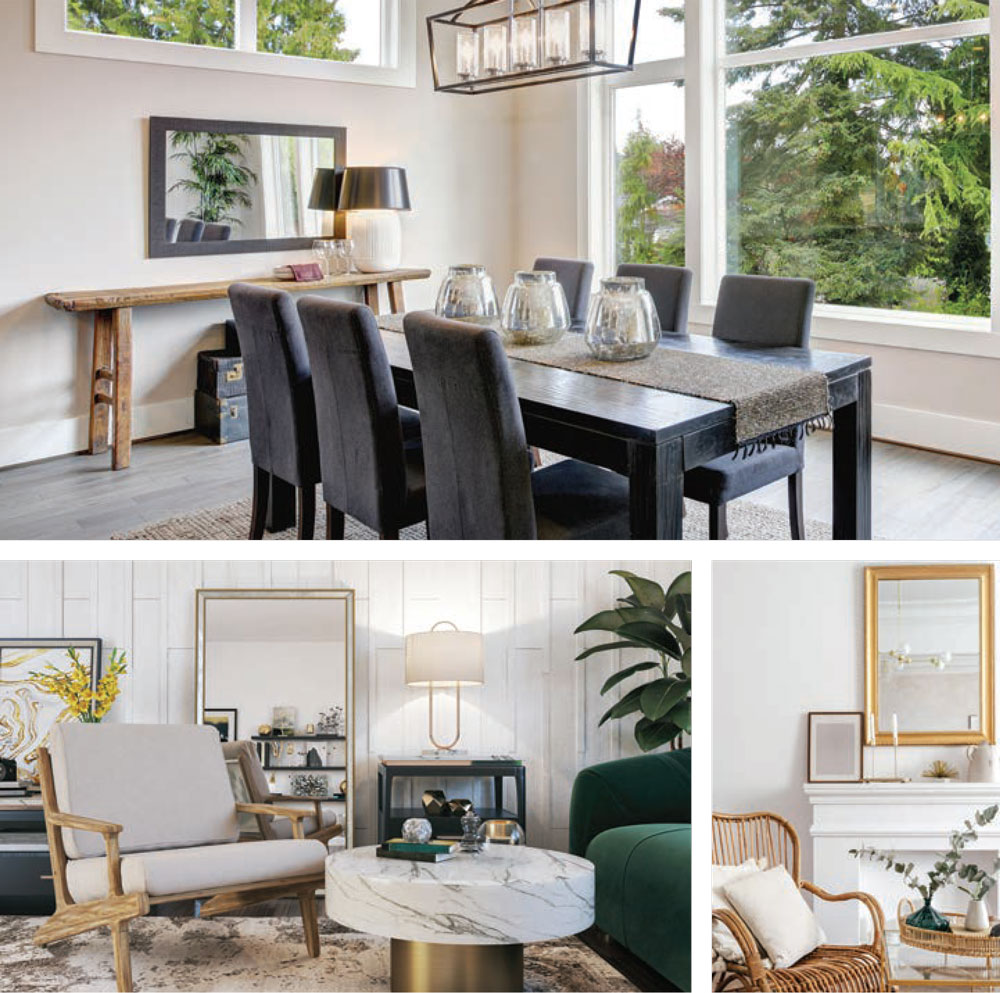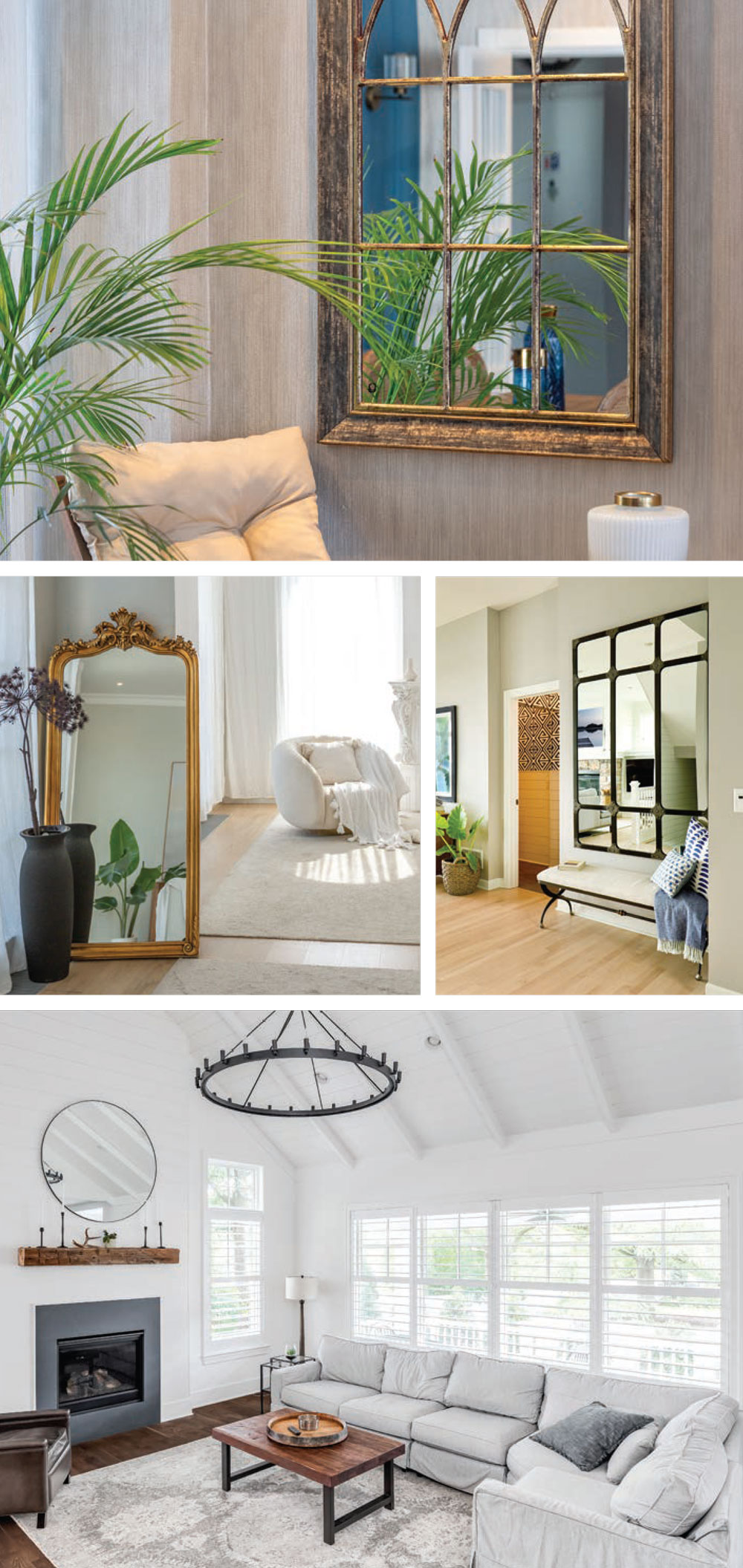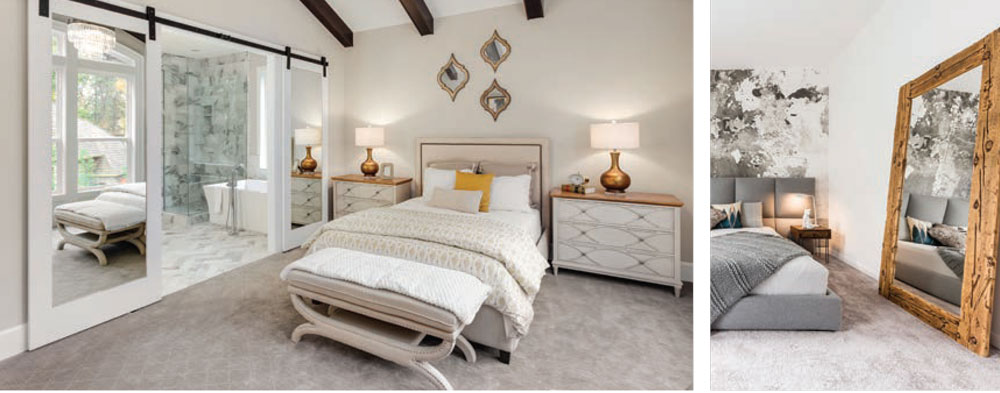MIRROR, MIRROR, ON THE WALL
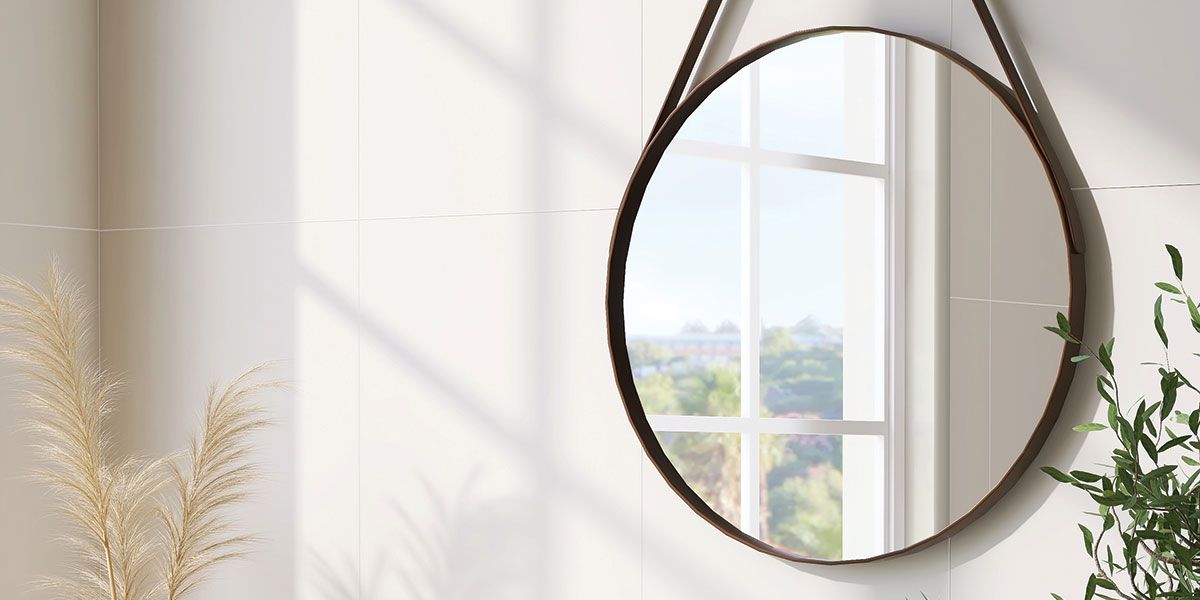
Functional element of home décor, design feature or both?
Mirrors have more benefits than just affording you a way to check your appearance before leaving home. Carefully chosen and strategically placed, they can also add instant glamor while increasing natural light. Whether used as handy functional elements or handsome design features, mirrors have a way of adding elegance wherever they are used.
Spreading light
In terms of functionality, mirrors are most often used to spread light throughout rooms, making those rooms appear larger. To maximize their effect, place mirrors where natural light shines to reflect sunlight to more dimly lit areas.
Positioned directly across from windows with beautiful views, mirrors have the effect of doubling the impact of those outdoor scenes, once when looking out the window and then again when looking at the outside image reflected in the mirror’s shiny surface. This placement has the effect of bringing the outdoors inside if you are lucky enough to have a lovely view of nature outside your window. Be careful, though, that the reflection in your mirror is worthy of enjoyment. In cases where the view from your window is altogether lacking in beauty (apartment dwellers understand this), consider placing a mirror to reflect a sparkly chandelier, a gallery wall of artwork, a prized antique or something else of beauty in your living space instead of your unlovely outside view.
Height, style & scale
Getting a mirror’s height right is key. Unlike artwork displayed at eye level to afford close inspection, a mirror needs to be positioned to provide the best reflection. Sometimes, this means hanging it slightly higher than eye level if the intent is for it to reflect a light fixture or a tall, stately piece of furniture across the room.
Conversely, a mirror used in an entryway above a console table or over a vanity in a bedroom, for example, may need to be hung slightly lower to visually connect it to the adjacent piece of furniture. Placing a mirror too high in such circumstances might give the appearance that it is floating in space, disconnected from other furnishings.
Ideally, a mirror should be at least two-thirds the length of the table it rests above. Indeed, a too-small mirror above a piece of furniture or one hung alone in a large room would look as out of proportion as one small shrub planted in front of a large home.
Considering the size of each room when selecting a mirror is critical. In a room with a higher ceiling, a larger mirror might be better hung in portrait orientation, making it appear closer to the ceiling, whereas a mirror hung in a room with a lower ceiling would be best displayed in landscape orientation. Fundamentally, scale matters in all elements of design.
Another concern when choosing a mirror for a particular room is frame style. It is important that a mirror’s frame be compatible with the rest of the room’s furnishings. Harmony is desirable here as in all other elements of decorating. With the popularity of shows like Downton Abbey and Bridgerton, plus the enduring traditional style of Queen Anne furnishings, mirrors with ornate frames, often in gold, remain excellent choices and are design elements in their own right. For 2025, look to maximalist pieces to make a statement.
In contemporary spaces, mirrors with subtle framing are more appropriate. Also, interior designers recommend heavier frames for larger mirrors and lighter weight frames for smaller mirrors and those for more modern spaces. Frame height, style and weight should be consistent with the overall feel of an interior. Keep in mind, also, that in a room with mostly angular furnishings, a round or oval mirror will soften the aesthetic with its curves.
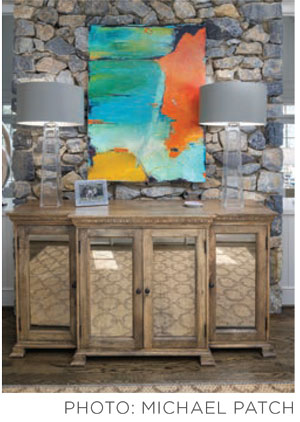 Unique uses
Unique uses
Although mirrors are most frequently used to reflect light, outdoor beauty and personal appearance, there are additional creative uses for mirrors. When incorporating mirrors into your interior design, consider one of the following novel applications:
- Mirrored tiles for a kitchen backsplash
- Mirrored insets in kitchen cabinet doors
- Mirrored accent furniture and accessories for any room
- A mirrored headboard
- Groupings of mirrors for a gallery wall
- Mirrors as substitutes for artwork
- A mirrored wall to create drama and the illusion of more space
- Mirrors behind lamps to reflect more artificial light into rooms
- Mirrors behind plants
- As a decorative touch between two windows
- Full-length mirrors mounted on the backs of bedroom doors, fronts of closet doors, or standing in frames
- Mirrors mounted in gardens
With so many styles and sizes available in-store and online, myriad options exist for introducing the magic of mirrors into our living spaces and proving true Dorothy’s fabled saying, “There’s no place like home.” ✦
best reflection, decorative touch, frame height, frame style, Mirrors, spread light, style and weight
